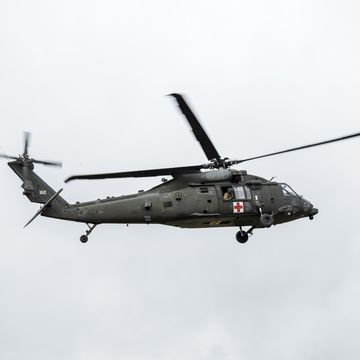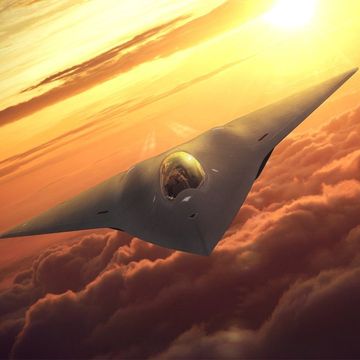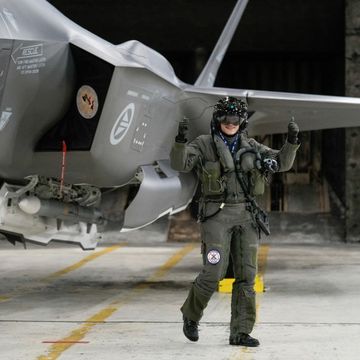The Raider is a little closer to real.
The U.S. Air Force’s next-generation stealth bomber is progressing as planned, the service says. and the next step is to actually fly the plane. That’s the word from an Air Force's man in charge of acquisitions, Lt. Gen. Arthur Bunch. He told Congress the stealth bomber, which would replace older stealthy bombers, is expected to be operational in the mid-2020s, and could fly as early as 2021.
"Our next major milestone is first flight," Bunch told the Senate Armed Services Committee, as reported by Military.com. (The Raider, named after “Doolittle’s Raiders” that struck Japan in 1942, passed its Critical Design Review in December.)
Bunch said the bomber will be "initial operations capable"—that is, the point at which the first squadron of the jets can conduct limited combat operations—in the mid 2020s. So when could the B-21 fly? It took the B-2 two years to progress from this point to first flight, so we could see the B-21 fly in 2021. Once available, the prototype jet will fly from Edwards Air Force Base in California and Tinker Air Force Base in Oklahoma.
The B-21 Raider bomber will be a heavy strategic bomber capable of carrying nuclear or conventional weapons. A flying wing design, the B-21 strongly resembles the older B-2. The B-21’s range is classified, but it should be able to conduct intercontinental missions against targets in China and Russia with tanker support. The amount of payload in conventional and nuclear weapons is also classified. It will have a crew of two but also be capable of being flown remotely.
The Air Force plans to purchase a minimum of 100 B-21s at a cost of $550 million per plane in 2009 dollars, or $641 million per plane in 2019 dollars. The B-21 will replace the B-2 Spirit bomber, which can carry either conventional or nuclear weapons, and the B-1B Lancer bomber, which can carry only conventional weapons. This will give the Air Force more long range nuclear platforms in the long run.
The B-21 will not replace the B-52 Stratofortress, which could fly into the 2040s. The B-52 will just never die.

Kyle Mizokami is a writer on defense and security issues and has been at Popular Mechanics since 2015. If it involves explosions or projectiles, he's generally in favor of it. Kyle’s articles have appeared at The Daily Beast, U.S. Naval Institute News, The Diplomat, Foreign Policy, Combat Aircraft Monthly, VICE News, and others. He lives in San Francisco.













